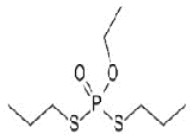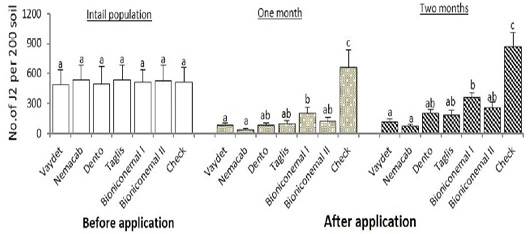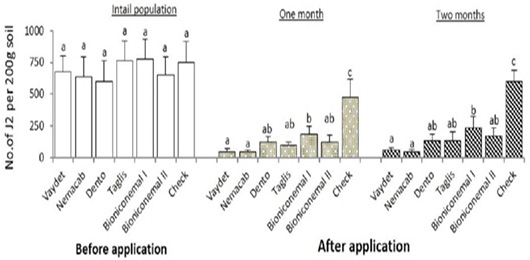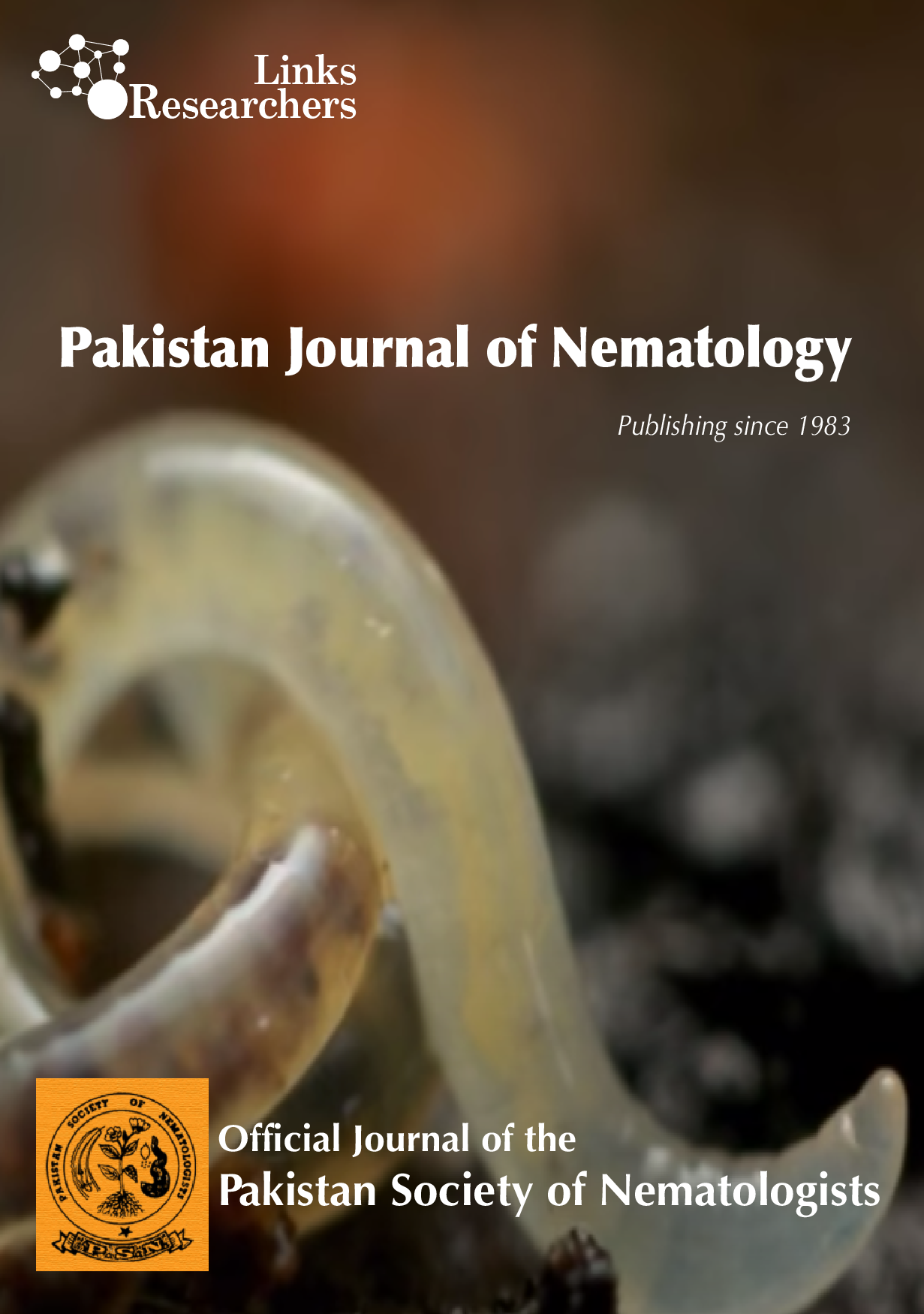Evalution of Bionematicides and Chemical Nematicides in Controlling Meloidogyne incognita on Grape, with Estimating Ethoprophos and Fenamiphos Residues and Chlorophyll Degree
Evalution of Bionematicides and Chemical Nematicides in Controlling Meloidogyne incognita on Grape, with Estimating Ethoprophos and Fenamiphos Residues and Chlorophyll Degree
Mohamed Adam1*, Hassan Sobhy2, Mohamed Abouzid3, Dalia Elhafny4 and El-Desouki Ibrahim5
Structure of Ethoprophos.
Structure of Fenamiphos.
Effect of bionematicides and nematicides on population densities of Meloidogyne incognita on grape in 2016. All tested products were applied as soil drench. Nematode population densities were estimated 1 and 2 months after nematicide application. Different lowercase within each block indicate significant differences at P ≤ 0.05 according to Tukey’s test (n = 4). Error bars represent standard deviations.
Dissipation of fenamiphos and ethoprophos nematicides in soils.
Effect of bionematicides and nematicides on population density of M. incognita on grape in 2017. All tested products were applied as soil drench. Nematode population densities were estimated 1 and 2 months after nematicide application. Different lowercase within each block indicate significant differences at P ≤ 0.05 according to Tukey’s test (n = 4). Error bars represent standard deviations.











